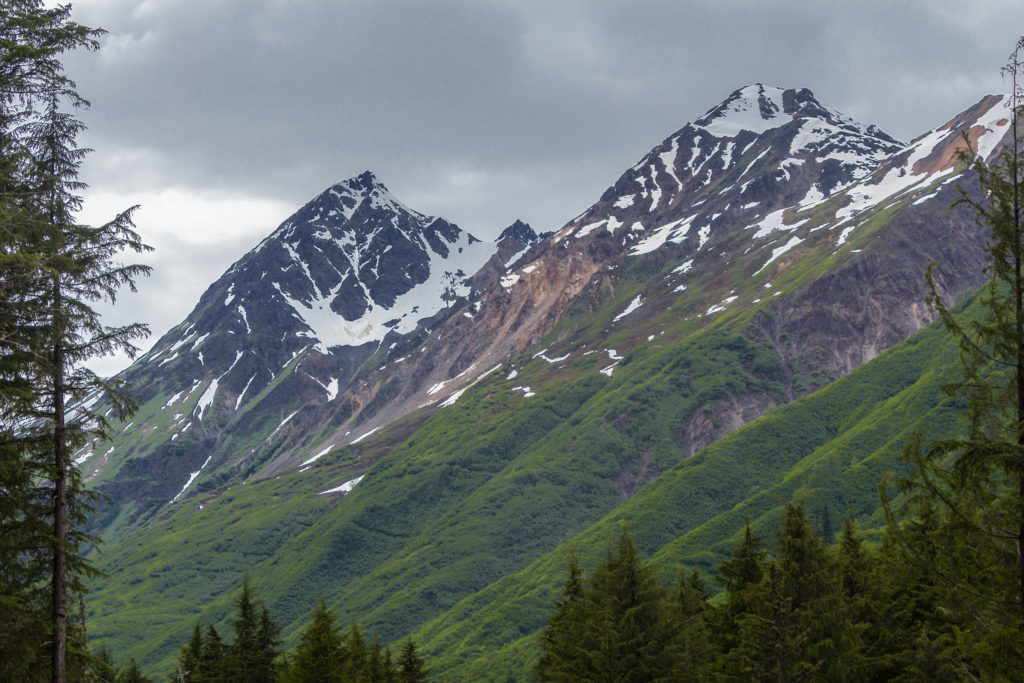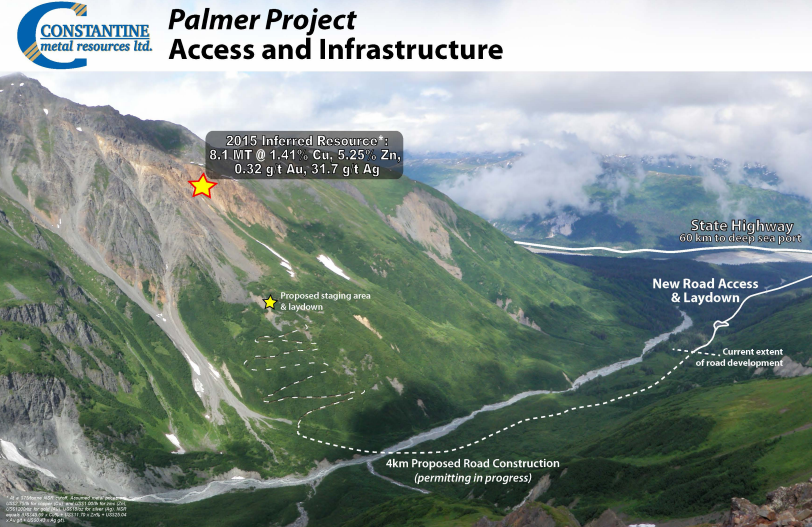
A Canadian company conducting exploration for a potential mine about 35 miles north of Haines was recently granted permission to grow its project.
Last week, the Federal Bureau of Land Management approved Constantine Metal Resources’ plan to expand operations at its Palmer Project site. The plan includes building a couple miles of road, along with culverts and bridges, to provide easier access to more drilling sites.
An environmental analysis found that while the work will have some impacts on water and wildlife, it says the endeavor shouldn’t cause significant harm.
Right now, Constantine relies heavily on helicopters to to shuttle employees and equipment to exploration sites along the mountain. Workers drill holes into the rock that average between 500 and 2,500 feet deep, looking for copper, zinc, gold and silver.
“There’s a lot of activity going on in that area of the mountain and it makes sense now to re-establish access to that area to better service those activities without the need for a helicopter for all operations,” said Liz Cornejo, Constantine’s exploration and community manager.
Constantine had permission for up to five acres of ground disturbance. They now plan to build an access road that extends across Glacier Creek up a mountain close to the main mineral deposit. That activity mandates an environmental assessment by the BLM.
The analysis looks at potential impacts to water quality, wildlife, fisheries, visual resources and more. It took about a year to complete and garnered more than 200 public comments. The assessment draws on studies from agencies like the Alaska Department of Fish and Game and research conducted by Constantine itself.
“It is our responsibility and goal to make sure that operations we permit on public land are safe and protective of natural resources and the local community,” said BLM field manager Dennis Teitzel.

Teitzel says the plan met those standards. The environmental assessment acknowledges that the expansion will have some adverse impacts on Glacier Creek and wildlife. But the BLM determined that the potential effects are not significant.
Guy Archibald with the Southeast Alaska Conservation Council sees it differently. SEACC was one of several groups whose comments to the BLM centered on environmental concerns. Other groups included Lynn Canal Conservation and the Chilkat Indian Village of Klukwan, about 15 miles south of the Palmer Project.
One of the conservation group’s major worries is the road construction and other work around Glacier Creek could affect the rivers it flows into. The Klehini River and Chilkat River are important resources for subsistence and commercial salmon fishing.
“This is what we hope not to see above the Klehini River,” Archibald said. “There’s too many people and communities and culture that rely on healthy water and fisheries up there. We’ve seen it happen before, we don’t want to see it happen again.”
One of Archibald’s major concerns has to do with the possibility that the road construction could strike rock that contains sulfide, and cause acid rock drainage, harming water and wildlife.
Constantine’s Cornejo says that’s a risk they’ve evaluated and found to be unlikely.
“All of the rocks that we’re working for the area of the road building are non-acid-generating,” she said. “And we’ve done numerous tests and all of the data is showing that there is no likelihood of acid rock generation.”
The BLM also put an additional requirement in place to try to minimize the potential for acid rock generation. Constantine must have a geologist on site inspecting road work on a daily basis during construction for ‘unanticipated exposures of sulfide minerals.’
Archibald says that’s not enough.
“Because once acid mine generation starts happening, it’s very hard to stop it,” he said.
Along with the road construction monitoring, the BLM lists a few other requirements. They include monitoring for raptor nests and mountain goats and that the company provide a buffer to keep activity away from those areas.
Constantine’s exploration right now consists of drilling holes from the surface of the mountain. In the future, it could involve underground exploration, which would require another round of studies and permitting.
“So at this point it’s something we are evaluating but not yet proposing,” Cornejo said. “And so it’s important to look at our activities as they’re currently proposed, which is just the road work to help support existing exploration activities.”
Cornejo says every rock, soil and water sample they take goes towards evaluating the potential for a mine. They hope the newly-approved road will help make that exploration easier and safer. The company plans to start building the road this fall and finish construction next summer.
View BLM documents and Constantine’s plan of operations here.
